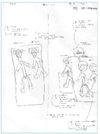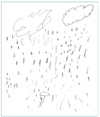Understanding of Children Through Drawings
Article information
Abstract
The world-wide universal language of children is drawing. This non-verbal language gives us an insight into how children see, feel, and think about the world around them. For children younger than age 11, drawing is a very effective window through which they can express and reflect their wishes, emotions, thoughts and concerns. Drawing is useful for all children, including those too young to have yet developed language skills. This tool is equally effective when working with children who have been diagnosed with communication disorders. This paper reviews the historical background of the development of the drawing test as a diagnostic tool. In addition, the characteristics of drawings are reviewed according to the stage of child development. Even though a projective drawing gives us lots of hypothetical information regarding a child's internal psychological and emotional state, it is not a formal psychological test in a strict sense. Therefore, it is inaccurate to reach a conclusion about children's psychological problems based only on clues from a drawing. Moreover, it is important to get additional information through means such as post-drawing inquiry and interviews with family members.




